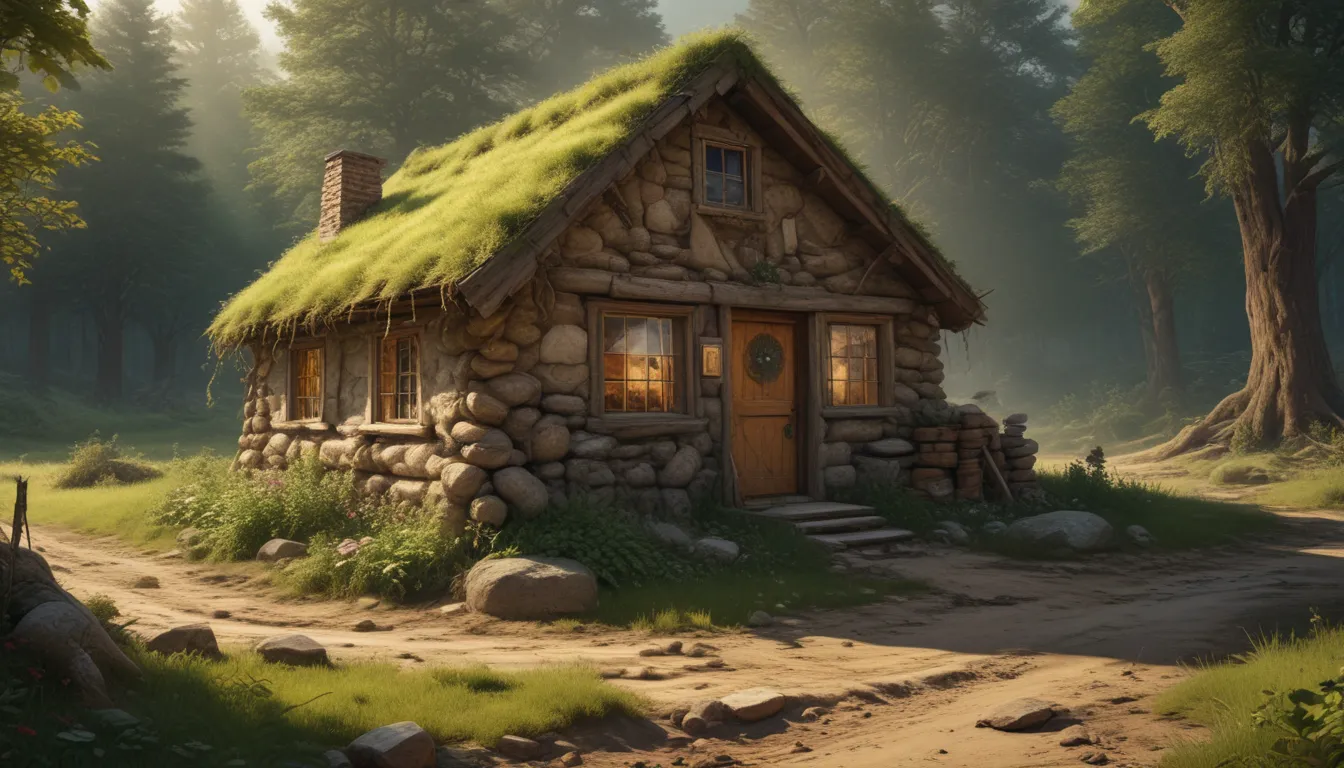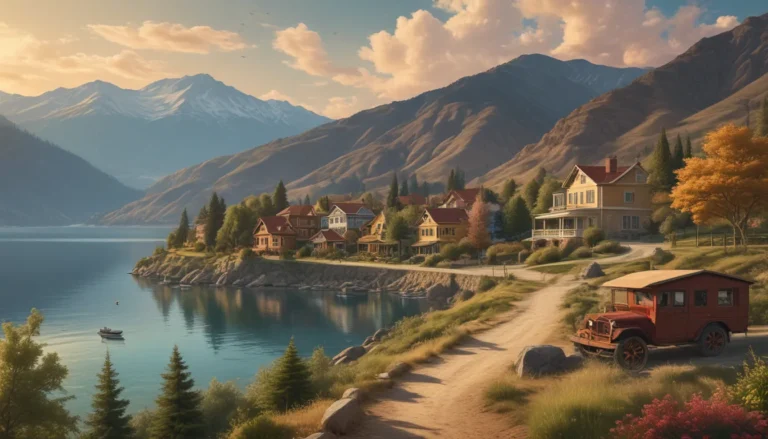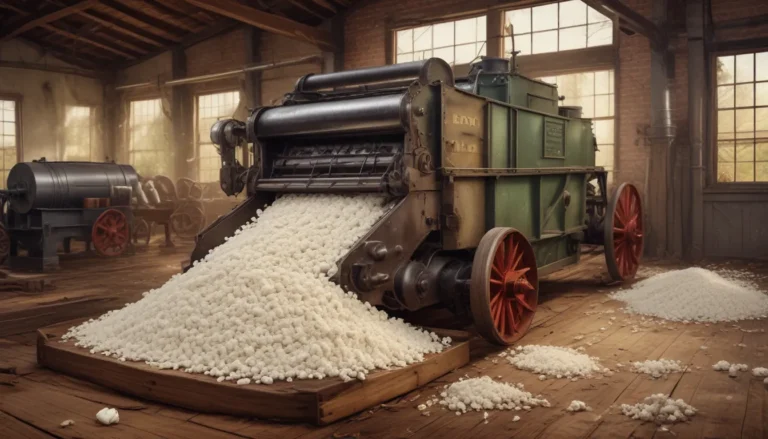The images in our articles may not match the content exactly. They are used to grab your attention, not to show the exact details in the text. The images complement the text but do not replace it.
Have you ever wondered how people in the past managed to stay cozy and snug without modern insulation and heating? Let’s delve into the world of sod houses, or “soddies,” which were ingenious eco-friendly dwellings built by early settlers in the American and Canadian prairies. These homes, made entirely from the earth itself, not only provided shelter but also embodied resilience, adaptability, and sustainable living practices. Join us on a journey to uncover the secrets of these green homes of the past and learn about their construction, significance, and lasting legacy.
The Ingenious Sod Houses: A Testament to Human Ingenuity
Sod houses, commonly known as soddies, were a practical solution for settlers in the United States Great Plains during the 19th century. Constructed from sod, the top layer of organic-rich soil held together by grass roots, these homes were a remarkable display of ingenuity and resourcefulness. The lack of traditional building materials like wood and stone in the vast prairies led settlers to turn to the earth itself to create durable and eco-friendly shelters. Despite their humble appearance, sod houses were more than just structures; they represented the determination and resilience of early pioneers in adapting to challenging environments.
The Construction Process Unveiled
Building a sod house was no small feat and required careful planning and hard work. Settlers would cut strips of sod using a plow and then stack these strips to form the walls of the house. The thickness of the sod walls varied but could be as much as two feet, offering substantial protection against the elements. Roofs were typically made from additional sod or, when available, wooden frames covered with tar paper to prevent leaks. Windows and doors posed a challenge due to the thickness of the walls, often necessitating settlers to fashion frames from whatever wood they could find or afford.
Life Inside a Sod House: Challenging Yet Comforting
Living in a sod house presented its set of challenges, but it also had unique comforts to offer. The sod walls provided excellent insulation, keeping the interior cool in summer and warm in winter. However, constant maintenance was required to keep the homes structurally sound and free from pests like insects and snakes that could burrow into the walls. Interior walls were sometimes plastered with lime to create a smoother, cleaner surface and to deter critters. Despite the challenges, many sod houses were surprisingly spacious and could include multiple rooms, providing ample living space for families.
Unveiling the Historical Significance
Sod houses hold a significant place in American history, symbolizing the resilience and determination of settlers who sought to establish a home in the harsh environment of the Great Plains. As railroads expanded and more building materials became available, sod houses gradually gave way to wooden or brick homes. Today, few original sod houses survive, preserved as historical sites that offer a glimpse into the lives of early pioneers. These humble abodes remind us of the adaptability and resilience required to thrive in new and challenging environments.
The Eco-Friendly Impact of Sod Houses
In many ways, sod houses represented an early form of sustainable living. By utilizing the natural resources available to them, settlers minimized their environmental footprint and harmonized their construction practices with the local environment. The construction of sod houses had a minimal impact on the environment compared to traditional methods, requiring no trees to be cut down or stones quarried. As these homes were eventually abandoned or demolished, the materials naturally decomposed, returning to the earth with little to no waste. This eco-friendly approach to building highlights the potential for sustainable construction practices that respect and preserve the environment.
Embracing the Legacy of Sod Houses
The legacy of sod houses continues to inspire modern architects, builders, and enthusiasts alike. By drawing lessons from the simplicity and efficiency of sod house construction, designers explore ways to incorporate sustainable and eco-friendly materials into contemporary designs. Museums and historical societies often feature exhibits on sod houses, educating new generations about this fascinating chapter in American history. Sod houses also make appearances in literature and film, capturing the imagination of those captivated by the pioneering spirit of early settlers. Community projects and historical reenactments sometimes involve the building of sod houses, providing a hands-on experience in this unique form of construction. The enduring fascination with sod houses underscores their significance as symbols of perseverance, sustainability, and the pursuit of the American dream.
Reflecting on Sod Houses: A Testament to Human Ingenuity
Sod houses, or soddies, were not just homes; they were symbols of resilience and creativity. Settlers on the vast prairies of North America turned to the earth itself to craft durable, eco-friendly shelters that provided warmth, comfort, and a sense of community. While few original sod houses remain today, their legacy lives on, inspiring sustainable architecture and reminding us of the resourcefulness required to flourish in challenging environments. The story of sod houses serves as a powerful reminder that with determination and creativity, we can overcome obstacles and build a better future.
Frequently Asked Questions About Sod Houses
Q: What exactly is a sod house?
A: Sod houses, also known as soddies, were homes built by early settlers using thick layers of grassy soil stacked to form walls. These eco-friendly dwellings provided shelter where traditional building materials were scarce, showcasing ingenuity and sustainability.
Q: How long did sod houses typically last?
A: Surprisingly durable, a well-maintained sod house could last around 20 to 30 years. Factors such as weather, construction quality, and upkeep played significant roles in determining their longevity.
Q: Were sod houses only found in the United States?
A: Not limited to the U.S., similar earth-sheltered homes were built worldwide. From Canada’s prairies to Iceland’s turf houses, people have used the land to create sustainable shelters throughout history.
Q: What made sod houses so special?
A: Beyond their unique construction, sod houses symbolized adaptability and sustainability. Settlers leveraged local materials to establish homes that blended seamlessly with the environment, offering excellent insulation against harsh weather.
Q: How did settlers build a sod house?
A: Settlers would cut strips of sod using a plow, stack these “bricks” to form walls, and use wooden frames for doors and windows. It was hard work, but the result was a cozy, earth-friendly home that provided shelter and community.
Q: Can you still find sod houses today?
A: While rare, a few preserved or reconstructed sod houses exist as historical sites, offering insights into pioneer life. Most have returned to the earth, leaving behind stories of resilience and ingenuity.
Q: What challenges did sod house dwellers face?
A: Inhabitants of sod houses dealt with pests, leaks, and the need for constant repairs. Despite the challenges, many appreciated these homes for the shelter and sense of community they provided in the vast prairies.
Embracing Quality and Authenticity
Our commitment to delivering trustworthy and engaging content lies at the core of our mission. Every fact shared on our platform is contributed by real users, enriching our database with diverse insights and information. To ensure the highest standards of accuracy and reliability, our dedicated editors meticulously review each submission. Rest assured in our dedication to delivering quality and authentic content as you explore and learn with us.






